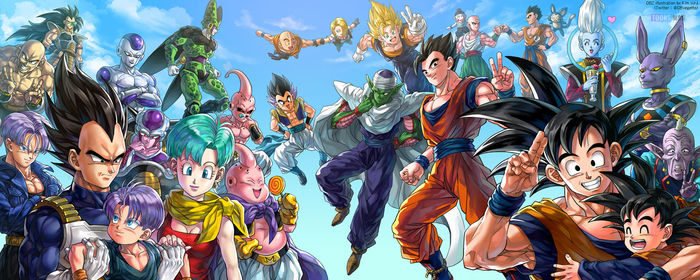A Glance at Anime History: Anime, a vibrant and captivating form of animation, has a rich and storied history that has evolved over the decades. From its humble beginnings in Japan to its status as a global cultural phenomenon, let’s glance at the fascinating journey of anime through the annals of time.
Early Beginnings (Early 20th Century – 1960s):
Early 20th-century Japan witnessed artists experimenting with animation techniques influenced by Western animation, tracing the roots of anime. In 1917, they created one of the earliest Japanese animations, “Namakura Gatana” (An Obtuse Sword). However, these animations often remained short and lacked the distinctive style associated with modern anime.
The turning point came with Osamu Tezuka, often called the “God of Manga.” His pioneering work, “Astro Boy” (Tetsuwan Atom), in the 1960s marked the birth of anime as we know it today. Tezuka’s storytelling prowess and innovative animation techniques set the stage for the growth of the anime industry.

The Birth of Iconic Studios (1970s – 1980s):
The 1970s and 1980s saw the emergence of iconic animation studios like Toei Animation and Studio Ghibli. Toei Animation produced popular series like “Dragon Ball” and “Sailor Moon,” contributing to the global popularity of anime.
Studio Ghibli, founded by Hayao Miyazaki and Isao Takahata, created masterpieces such as “My Neighbor Totoro,” “Princess Mononoke,” and “Spirited Away.” These films garnered international acclaim and solidified Ghibli’s reputation as a powerhouse in the animation world.
The Rise of Television (1990s – Early 2000s):
The 1990s witnessed a surge in anime’s popularity, thanks in part to TV broadcasts of series like “Neon Genesis Evangelion,” “Cowboy Bebop,” and “Pokémon.” These shows captivated audiences worldwide and introduced diverse genres, from mecha to space westerns.
During this era, the internet was pivotal in connecting global fans. Online forums, fan subtitling, and fan communities allowed enthusiasts to access and discuss anime more efficiently than ever.

Global Expansion (Mid-2000s – Present):
The mid-2000s marked a significant milestone as anime became a global phenomenon. Streaming services like Crunchyroll and Funimation made it convenient for fans worldwide to access the latest episodes and films legally and with subtitles.
Anime conventions sprouted up across the globe, providing a space for fans to celebrate their passion, cosplay as their favorite characters, and meet voice actors and creators.
Japanese animation studios continued to produce critically acclaimed works. Makoto Shinkai’s “Your Name” and Demon Slayer: Kimetsu no Yaiba” broke box office records, proving that anime’s appeal was more vital than ever.

Diverse Genres and Themes:
Anime’s allure lies in its ability to explore various genres and themes. Whether it’s the epic battles of “One Piece,” the emotional depth of “Your Lie in April,” or the cyberpunk dystopia of “Ghost in the Shell,” there’s an anime for everyone.

Anime in the 21st Century:
In the 21st Century, anime has continued to thrive with groundbreaking series like “Attack on Titan,” “My Hero Academia,” and “Demon Slayer.” These series resonate with global audiences and push the boundaries of storytelling and animation.
The influence of anime has extended beyond the screen, with Western animation and film drawing inspiration from its artistry and storytelling. Works like “Avatar: The Last Airbender” and “The Legend of Korra” have demonstrated anime’s impact on the animation industry.
Anime’s journey from its humble beginnings to its current status as a global cultural phenomenon is a testament to its enduring appeal and artistic innovation. As it continues to evolve and captivate new generations of viewers, anime remains a vibrant and influential medium that transcends borders and enriches the entertainment world.
Read also: Anime: A Journey Through the Vibrant World of Japanese Animation and Anime vs Manga, Good to Know the Basic
A Glance at Anime History Video
This post was created with our nice and easy submission form. Create your post!









4 Comments